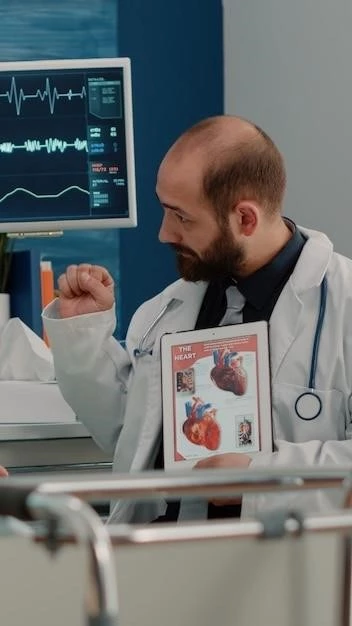Understanding Cardiac Arrest
Causes of Cardiac Arrest
Cardiac arrest can be caused by various factors‚ including underlying heart conditions‚ severe blood loss‚ drug abuse‚ electrocution‚ drowning‚ and respiratory failure․ Other causes include sudden impact to the chest‚ choking‚ and certain medical procedures․ Understanding these causes is vital for prevention and timely intervention․
Symptoms of Cardiac Arrest
Symptoms of cardiac arrest include sudden loss of responsiveness‚ no normal breathing‚ and no pulse․ Other signs may include chest pain‚ shortness of breath‚ dizziness‚ and racing heartbeat․ Prompt recognition of these symptoms is crucial for immediate intervention and increased chances of survival․
Treatment Options for Cardiac Arrest
Treatment for cardiac arrest involves immediate actions such as cardiopulmonary resuscitation (CPR) and using automated external defibrillators (AEDs)․ Advanced medical interventions include medications‚ implantable devices like pacemakers or defibrillators‚ and in severe cases‚ coronary angioplasty or bypass surgery․ Quick and effective treatment is vital for restoring heart function and preventing complications․
Prevention of Cardiac Arrest
Preventing cardiac arrest involves maintaining a healthy lifestyle‚ managing underlying health conditions‚ regular exercise‚ a balanced diet‚ avoiding tobacco and excessive alcohol consumption‚ and managing stress․ Additionally‚ early identification and treatment of heart conditions‚ as well as learning CPR and using AEDs‚ can play a significant role in preventing cardiac arrest and improving outcomes․
Risk Factors for Cardiac Arrest
Risk factors for cardiac arrest include underlying heart conditions such as coronary artery disease‚ a previous heart attack‚ abnormal heart rhythms‚ congenital heart defects‚ as well as a family history of cardiac arrest or sudden cardiac death․ Other factors like age‚ gender‚ smoking‚ obesity‚ high blood pressure‚ high cholesterol‚ diabetes‚ and a sedentary lifestyle can also increase the risk․ Understanding and managing these risk factors are key to prevention and reducing the likelihood of experiencing cardiac arrest․

Managing Cardiac Arrest
Recovery and Rehabilitation after Cardiac Arrest
After surviving cardiac arrest‚ a structured cardiac rehabilitation program can aid in physical and emotional recovery․ This program typically includes exercises‚ guidance on heart-healthy habits‚ emotional support‚ and education on managing risk factors․ Rehabilitation aims to improve overall health‚ strengthen the heart‚ and reduce the risk of future cardiac events․ Family and social support play a crucial role in the recovery process․
Differences between Heart Attack and Cardiac Arrest
While both are serious heart conditions‚ a heart attack (myocardial infarction) is caused by a blocked coronary artery leading to a lack of blood flow to the heart muscle․ In contrast‚ cardiac arrest is a sudden loss of heart function where the heart stops beating effectively․ A heart attack can sometimes lead to cardiac arrest‚ but they are distinct medical emergencies with different treatment approaches and outcomes․
Cardiopulmonary Resuscitation (CPR) for Cardiac Arrest
Cardiopulmonary resuscitation (CPR) is a life-saving technique performed in cases of cardiac arrest․ It involves chest compressions and rescue breaths to manually keep blood and oxygen circulating in the body․ CPR can help sustain vital functions until emergency medical help arrives․ Training in CPR is essential for everyone to be prepared to act quickly in emergencies and potentially save lives․
